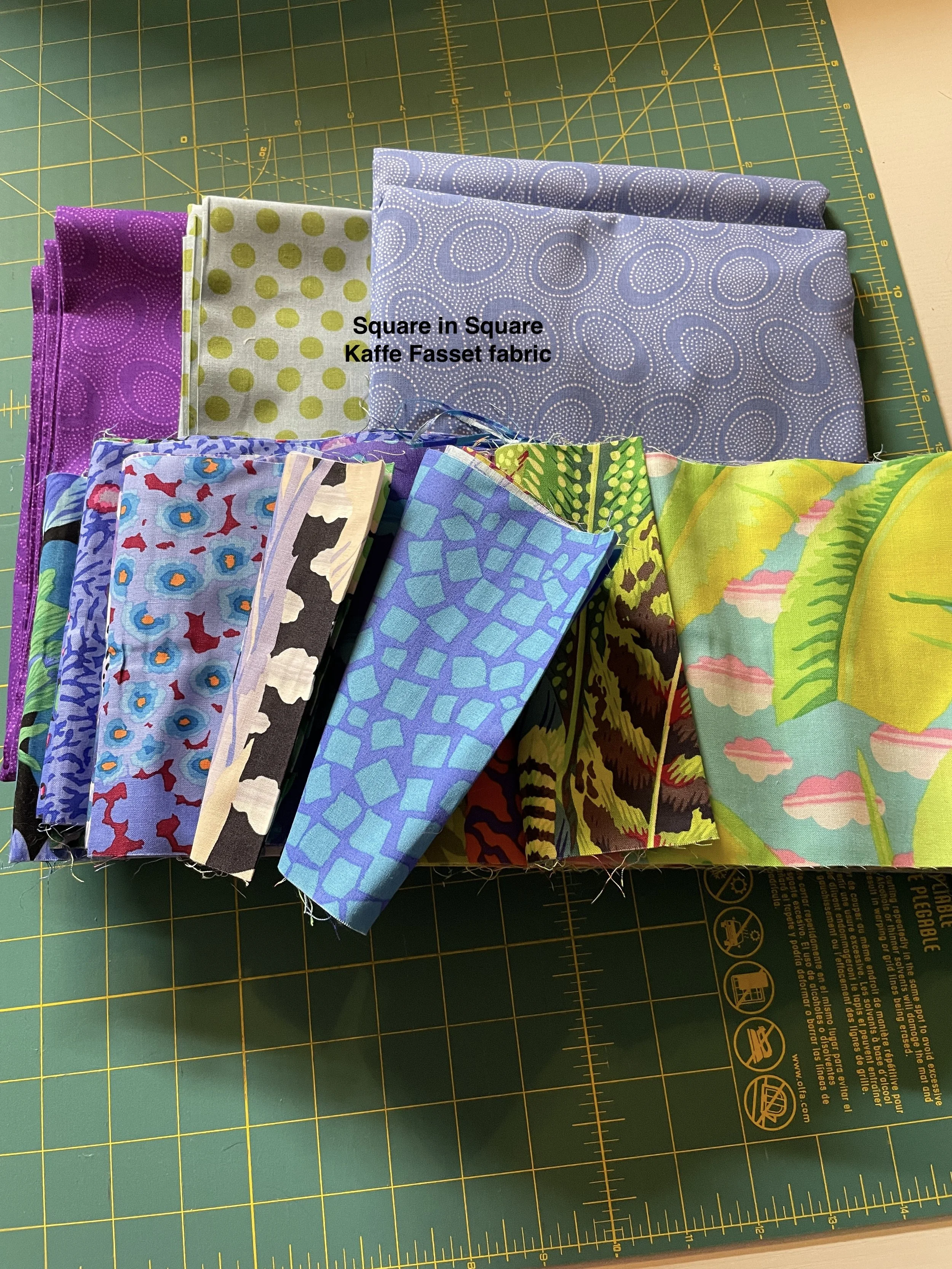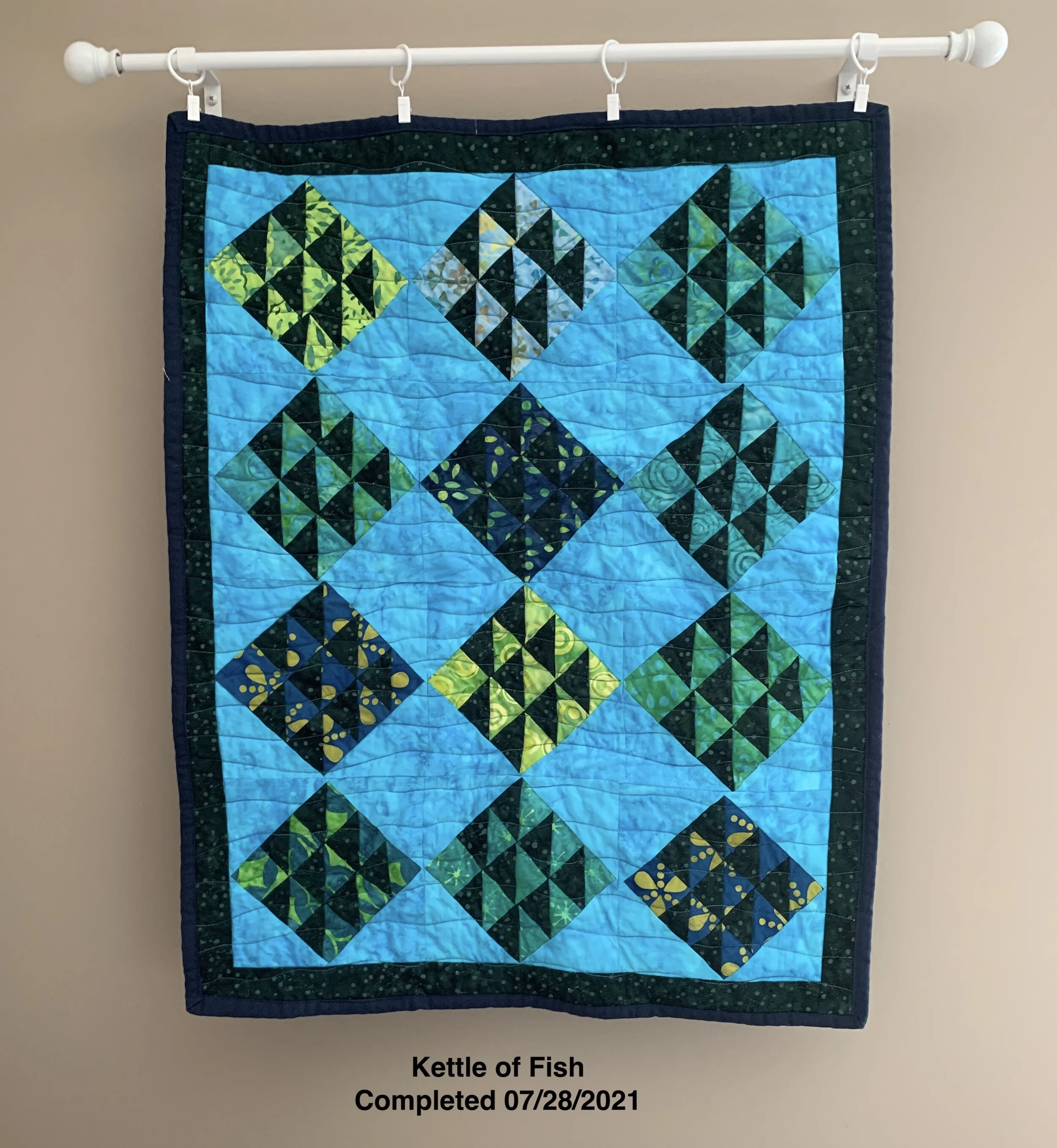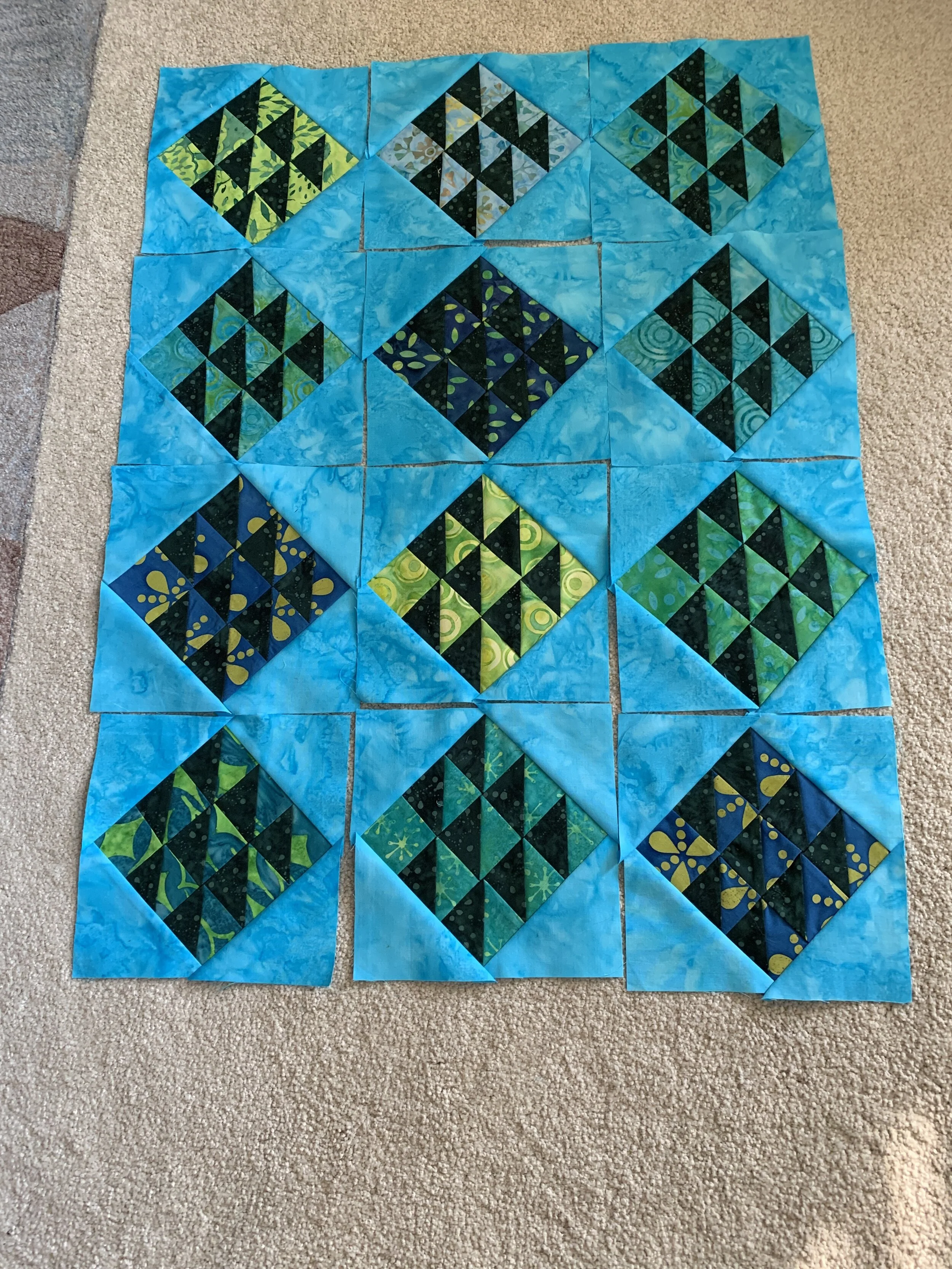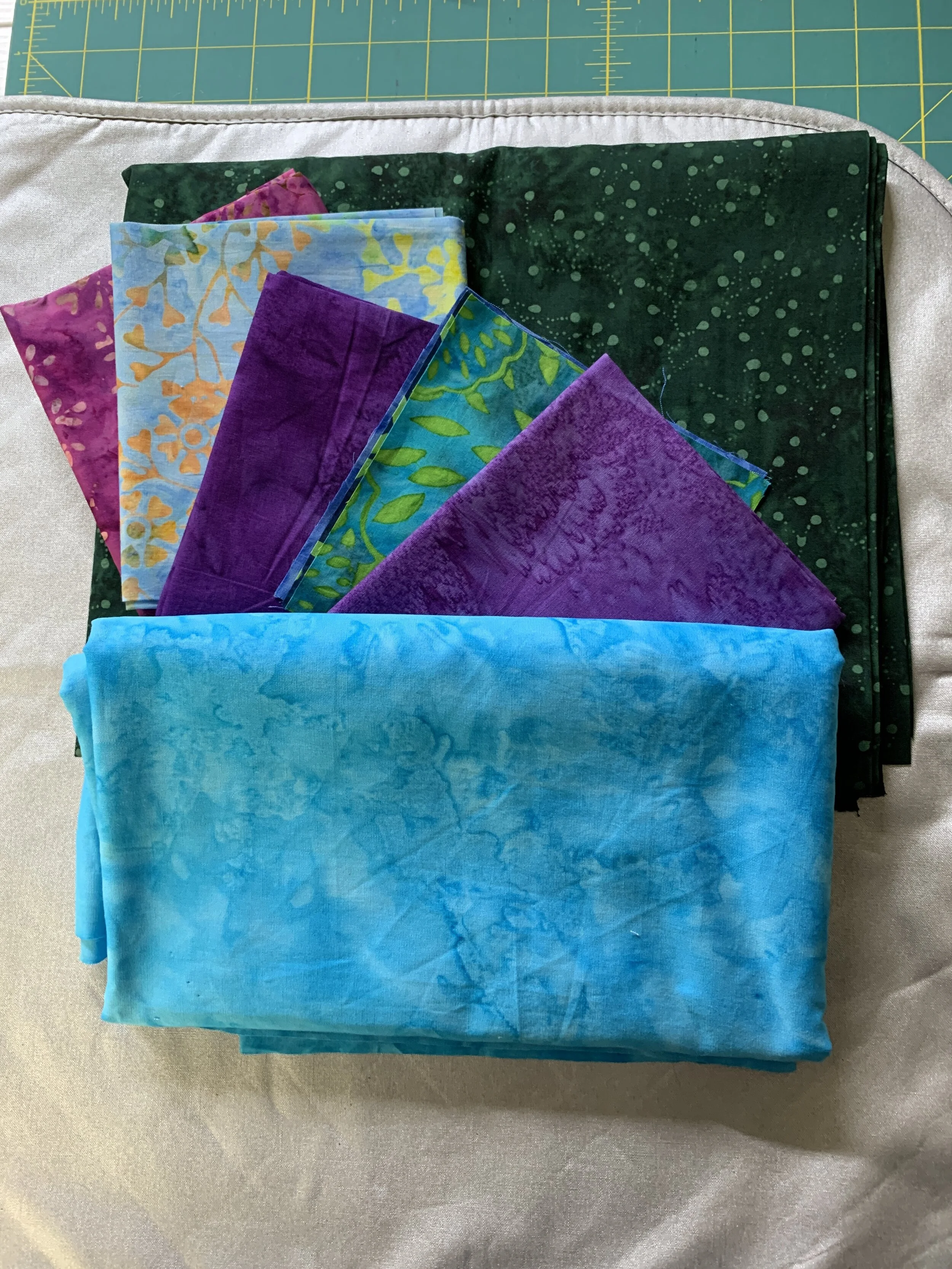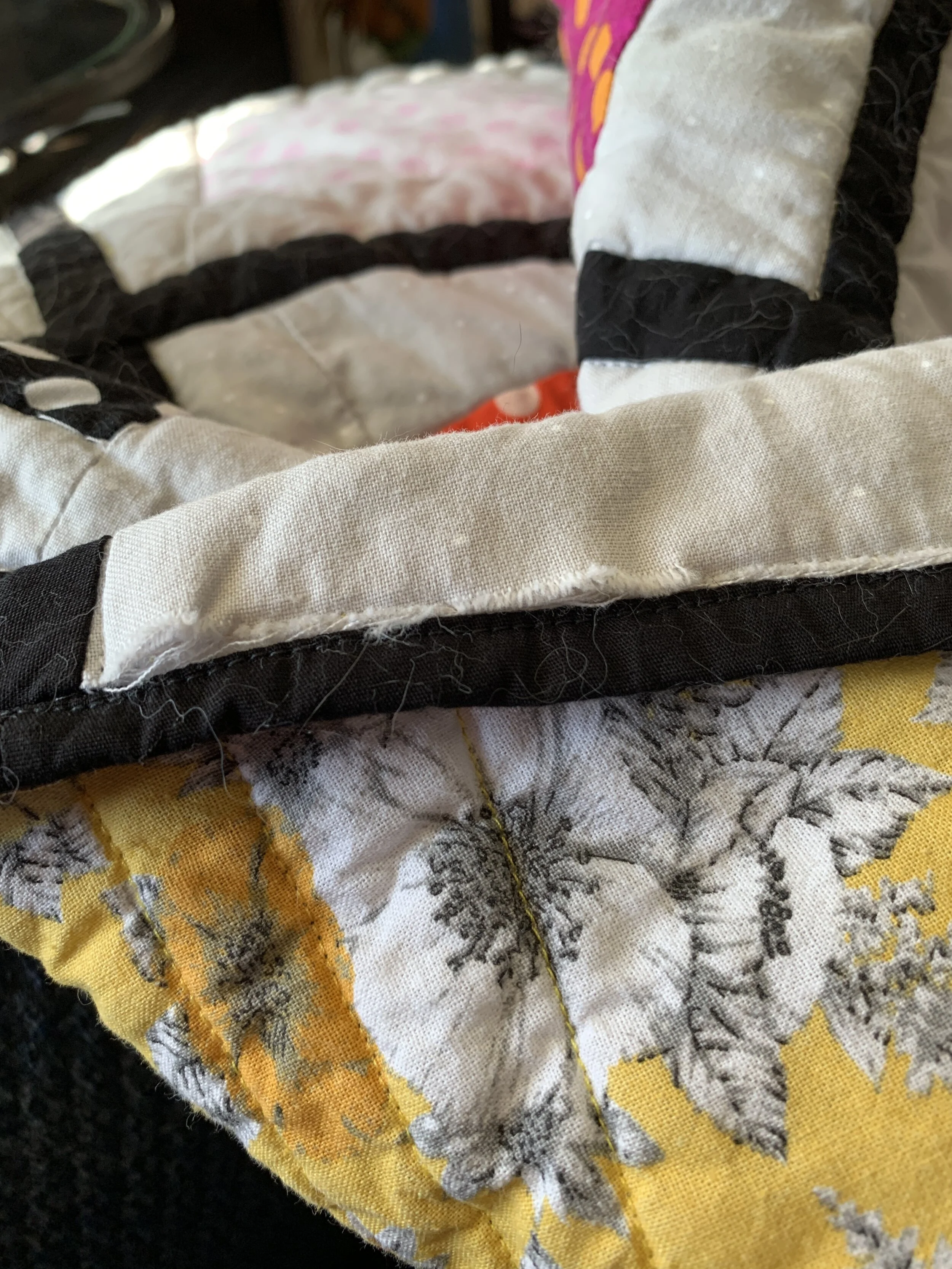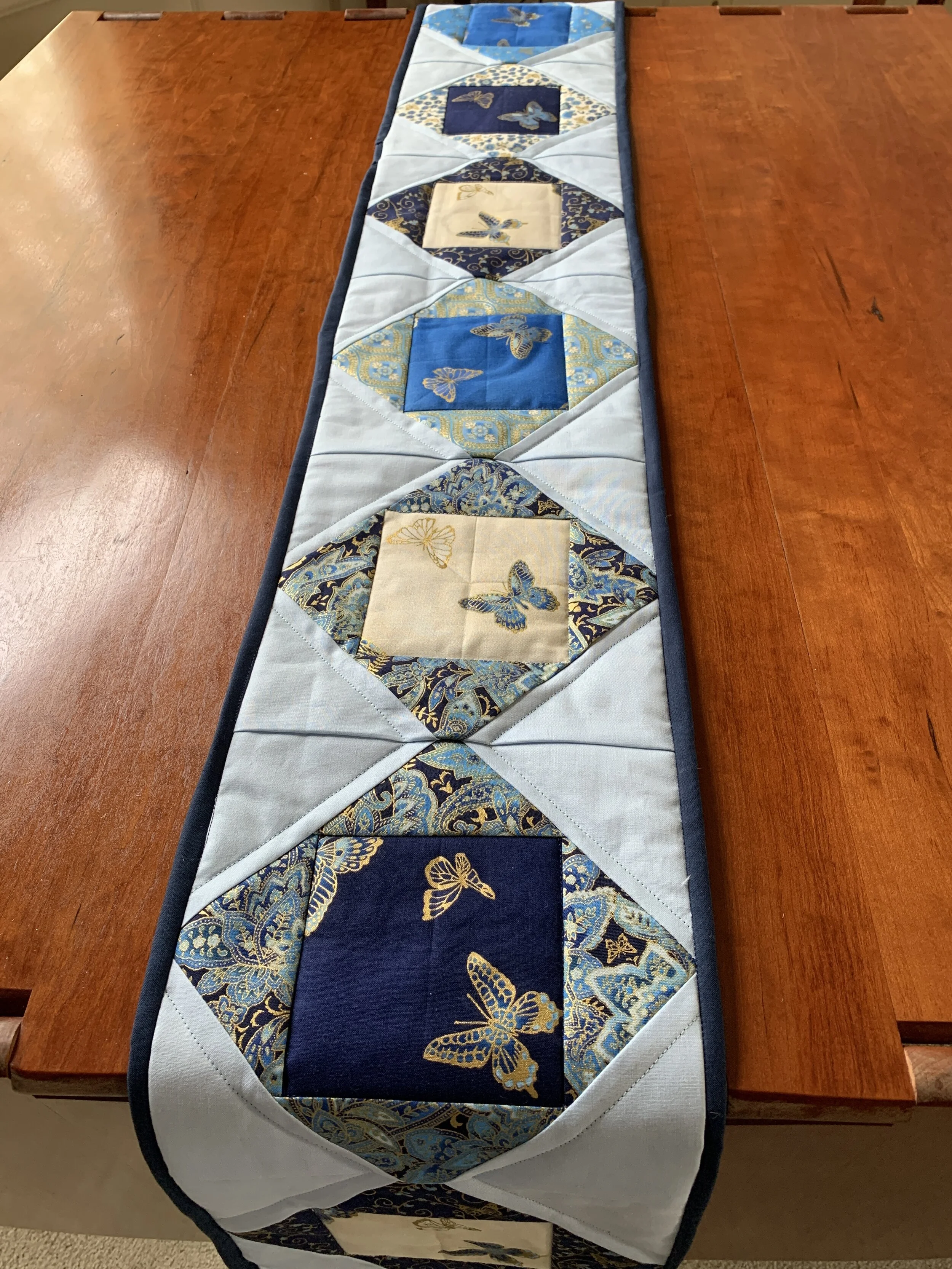I’ve started working on a quilt that Mike has requested - more about that in a later post.
My fabric cutting skills have gotten better but not excellent. I decided to buy a fabric cutting machine and after much research I decided on the Cricut Maker. It arrived as an early birthday/Christmas gift (isn’t he wonderful !!) on Friday Oct 16th. I unboxed it this morning and it’s extremely well-built and easy to use. I got the Maker connected via Bluetooth to my Mac easily and following the lead of a brief tutorial, cut a circle and a square with no difficulty at all.
You can see the Maker here. I got the mint green which looks nice in my sewing room.
I’m going to do a mini quilt to get to know the machine and Cricut’s design space where you lay out the components of the block(s) to be cut. Riley Blake, a fabric manufacturer, has partnered with Cricut and several quilt designers to create simple designs and quilt kits that use the Maker to cut the fabric. I might use one of their kits. You can see the quilt designs here. Or maybe I’ll use a pattern I already have and do my own thing.
Looking beyond that, here are some thoughts I have for my next quilts (the images below were snipped from the Web and I have no idea how to make them the same size 😞 ):
Mike’s requested quilt - picture to come in a later post
A bookcase quilt (see picture below) - I stumbled into a blog post somewhere about bookcase quilts, which were a craze about 10 years ago. I looked at many images dismissively until —— I was gobsmacked when I saw this one. I want to make something similar to this.
A wonky butterfly quilt (see picture below) - I already bought the pattern and will, for the first time, use batik fabric. Batik fabric never called to me until I saw this block and a light shined in my brain.

